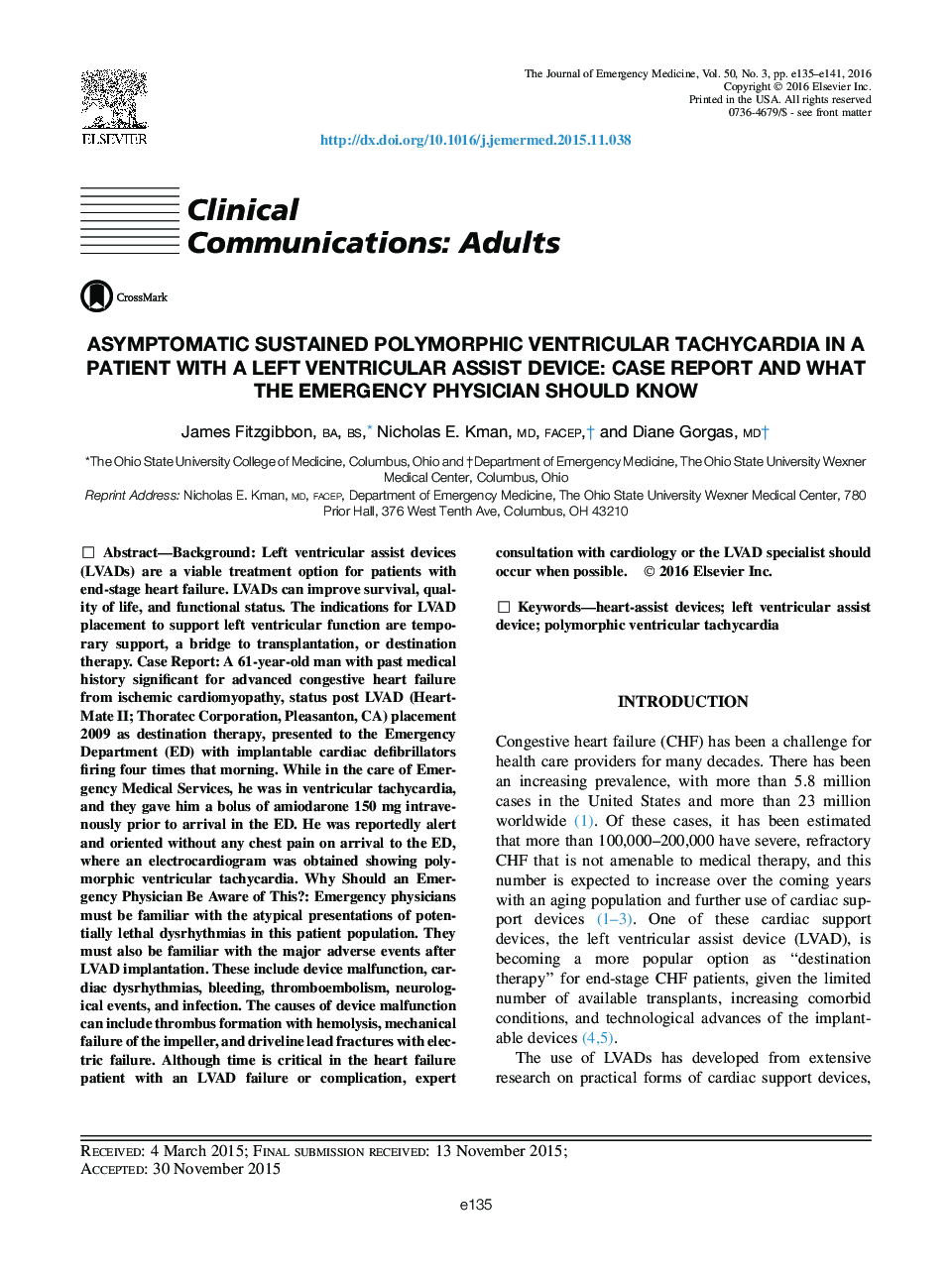| کد مقاله | کد نشریه | سال انتشار | مقاله انگلیسی | نسخه تمام متن |
|---|---|---|---|---|
| 6084831 | 1589115 | 2016 | 7 صفحه PDF | دانلود رایگان |
BackgroundLeft ventricular assist devices (LVADs) are a viable treatment option for patients with end-stage heart failure. LVADs can improve survival, quality of life, and functional status. The indications for LVAD placement to support left ventricular function are temporary support, a bridge to transplantation, or destination therapy.Case ReportA 61-year-old man with past medical history significant for advanced congestive heart failure from ischemic cardiomyopathy, status post LVAD (HeartMate II; Thoratec Corporation, Pleasanton, CA) placement 2009 as destination therapy, presented to the Emergency Department (ED) with implantable cardiac defibrillators firing four times that morning. While in the care of Emergency Medical Services, he was in ventricular tachycardia, and they gave him a bolus of amiodarone 150Â mg intravenously prior to arrival in the ED. He was reportedly alert and oriented without any chest pain on arrival to the ED, where an electrocardiogram was obtained showing polymorphic ventricular tachycardia.Why Should an Emergency Physician Be Aware of This?Emergency physicians must be familiar with the atypical presentations of potentially lethal dysrhythmias in this patient population. They must also be familiar with the major adverse events after LVAD implantation. These include device malfunction, cardiac dysrhythmias, bleeding, thromboembolism, neurological events, and infection. The causes of device malfunction can include thrombus formation with hemolysis, mechanical failure of the impeller, and driveline lead fractures with electric failure. Although time is critical in the heart failure patient with an LVAD failure or complication, expert consultation with cardiology or the LVAD specialist should occur when possible.
Journal: The Journal of Emergency Medicine - Volume 50, Issue 3, March 2016, Pages e135-e141
